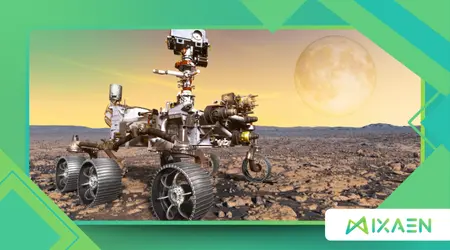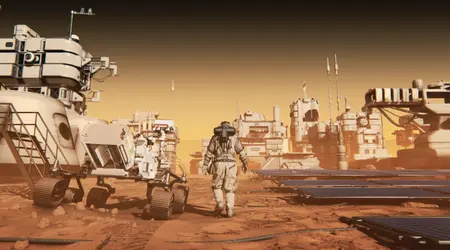Space Exploration: Future Missions to Mars

The quest for Space Exploration has always been a testament to humanity’s insatiable curiosity and relentless drive to push boundaries.
Anúncios
Among the most ambitious endeavors in this field is the pursuit of landing humans on Mars.
This red planet, often dubbed Earth’s sibling, has captivated scientists, engineers, and dreamers alike.
But what does the future hold for Space Exploration missions to Mars?
Let’s dive into the latest developments, challenges, and the groundbreaking technologies that could make interplanetary travel a reality.
Why Mars? The Allure of the Red Planet
Mars has long been the focal point of Space Exploration for several compelling reasons.
Its proximity to Earth, relatively hospitable environment, and potential for harboring life—past or present—make it an ideal candidate for human colonization.
Unlike Venus, with its crushing atmosphere, or the distant gas giants, Mars offers a tangible goal for scientists and explorers.
Recent data from NASA’s Perseverance rover has revealed intriguing clues about the planet’s past.
For instance, the discovery of ancient riverbeds and mineral deposits suggests that liquid water once flowed on Mars.
This finding not only fuels speculation about past life but also raises hopes for sustaining future human missions.
The Roadmap to Mars: Key Missions on the Horizon
Several missions are already in the pipeline, each contributing to the broader goal of Space Exploration and Mars colonization.
Here’s a breakdown of the most significant projects:
1. NASA’s Artemis Program: A Stepping Stone to Mars
While Artemis primarily focuses on returning humans to the Moon by 2025, it serves as a critical testing ground for technologies needed for Mars.
The program aims to establish a sustainable lunar presence, which will help scientists understand how to live and work in deep space.
Lessons learned from Artemis will directly inform future Mars missions.
+ James Webb Telescope: The Discoveries That Revolutionized Astronomy
2. SpaceX’s Starship: Revolutionizing Interplanetary Travel
Elon Musk’s SpaceX is developing Starship, a fully reusable spacecraft designed to carry humans to Mars.
With a payload capacity of over 100 metric tons, Starship could transport the necessary infrastructure for building a Martian colony.
SpaceX envisions launching its first crewed mission to Mars as early as the 2030s.
3. ESA’s ExoMars Rover: Searching for Signs of Life
The European Space Agency (ESA) is collaborating with Russia’s Roscosmos on the ExoMars mission.
Scheduled for launch in 2028, the rover will drill into the Martian surface to search for biosignatures, providing crucial insights into the planet’s habitability.
Challenges of Mars Exploration: What Stands in the Way?
Despite the excitement surrounding Space Exploration missions to Mars, significant hurdles remain.
These challenges span technical, physiological, and psychological domains.
1. The Journey Itself: Surviving the Trip
Traveling to Mars takes approximately seven months, during which astronauts will face prolonged exposure to cosmic radiation and microgravity.
NASA’s Human Research Program is actively studying the effects of space travel on the human body, including muscle atrophy and bone density loss.
2. Living on Mars: Building a Sustainable Habitat
Once on Mars, astronauts will need to contend with the planet’s thin atmosphere, extreme temperatures, and lack of liquid water.
Technologies like 3D-printed habitats and in-situ resource utilization (ISRU) are being developed to address these issues.
For example, NASA’s MOXIE experiment on the Perseverance rover has successfully produced oxygen from Martian CO2, a promising step toward self-sufficiency.
3. Psychological Resilience: The Human Factor
Isolation and confinement pose significant psychological challenges.
A study by the University of Hawaii’s HI-SEAS program found that prolonged isolation in a Mars-like environment can lead to stress and interpersonal conflicts.
Addressing these issues will be crucial for the success of long-term missions.

The Role of International Collaboration in Space Exploration
Mars missions are not the sole purview of any single nation.
International cooperation is essential for pooling resources, expertise, and funding.
The International Space Station (ISS) serves as a model for such collaboration, with contributions from NASA, ESA, Roscosmos, and other agencies.
For instance, the United Arab Emirates’ Hope Probe, which entered Mars’ orbit in 2021, has provided valuable data on the planet’s atmosphere.
Similarly, China’s Tianwen-1 mission, which includes an orbiter, lander, and rover, marks a significant milestone in the country’s Space Exploration efforts.
Ethical Considerations: Should We Colonize Mars?
As we advance toward Mars, ethical questions arise.
Is it right to alter another planet’s environment?
Could we inadvertently contaminate Mars with Earth-based microbes, jeopardizing potential native life forms?
These concerns underscore the need for rigorous planetary protection protocols.
Moreover, the cost of Space Exploration missions to Mars is staggering.
Critics argue that these funds could be better spent addressing pressing issues on Earth, such as climate change and poverty.
Proponents, however, contend that the technological advancements and scientific discoveries from Mars exploration will benefit humanity as a whole.
The Economic Potential of Mars Exploration
Beyond scientific and exploratory goals, Mars missions hold significant economic promise.
The development of new technologies, from advanced propulsion systems to life-support systems, could spur innovation across industries.
For example, SpaceX’s reusable rockets have already reduced the cost of launching payloads into space, making Space Exploration more accessible.
Additionally, the potential for mining Martian resources, such as water ice and rare minerals, could open up new economic frontiers.
++ Terraforming Mars: Can We Make the Red Planet Habitable?
Tables: Key Data on Mars Missions
Table 1: Upcoming Mars Missions
| Mission Name | Agency/Organization | Launch Year | Objective |
|---|---|---|---|
| Artemis Program | NASA | 2025 | Lunar exploration as a precursor to Mars |
| Starship | SpaceX | 2030s | Human colonization of Mars |
| ExoMars Rover | ESA/Roscosmos | 2028 | Search for biosignatures |
Table 2: Challenges and Solutions for Mars Exploration
| Challenge | Potential Solution |
|---|---|
| Cosmic radiation | Advanced shielding materials |
| Microgravity effects | Artificial gravity systems |
| Thin atmosphere | In-situ resource utilization (ISRU) |
| Psychological stress | Virtual reality and communication tools |

The Future of Space Exploration: A Multi-Planetary Species?
As we look ahead, the prospect of becoming a multi-planetary species is no longer confined to science fiction.
Mars represents the next giant leap in Space Exploration, offering a chance to expand our horizons and ensure the long-term survival of humanity.
However, success will depend on overcoming immense challenges, fostering international collaboration, and addressing ethical concerns.
The journey to Mars is not just about reaching another planet; it’s about redefining what it means to be human in the cosmos.
Conclusion: A Bold Vision for Tomorrow
The future of Space Exploration is brimming with possibilities, and Mars stands at the forefront of this exciting frontier.
From cutting-edge technologies to international partnerships, the path to the Red Planet is being paved with ingenuity and determination.
As we embark on this audacious journey, one thing is certain: the spirit of exploration that has driven humanity for centuries will continue to propel us toward the stars.
Mars is not just a destination; it’s a symbol of what we can achieve when we dare to dream big.
And as we set our sights on this distant world, we take one step closer to unlocking the mysteries of the universe—and ourselves.
